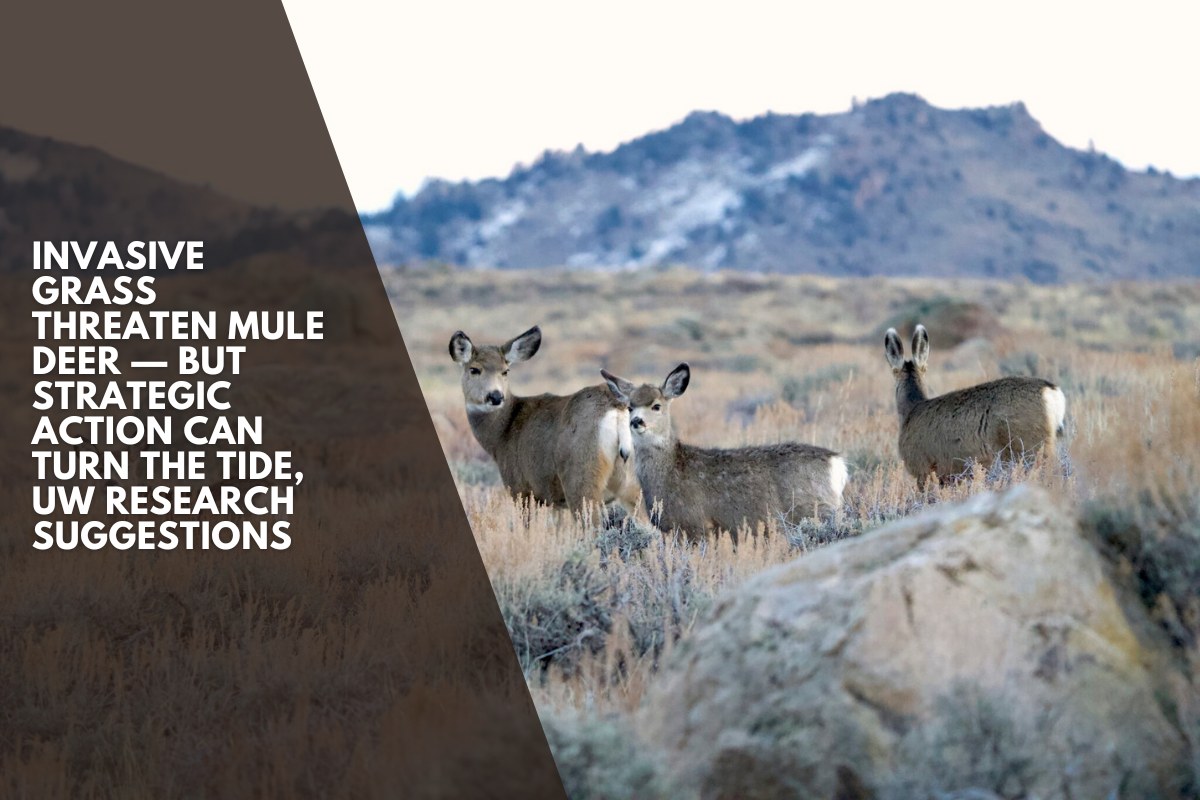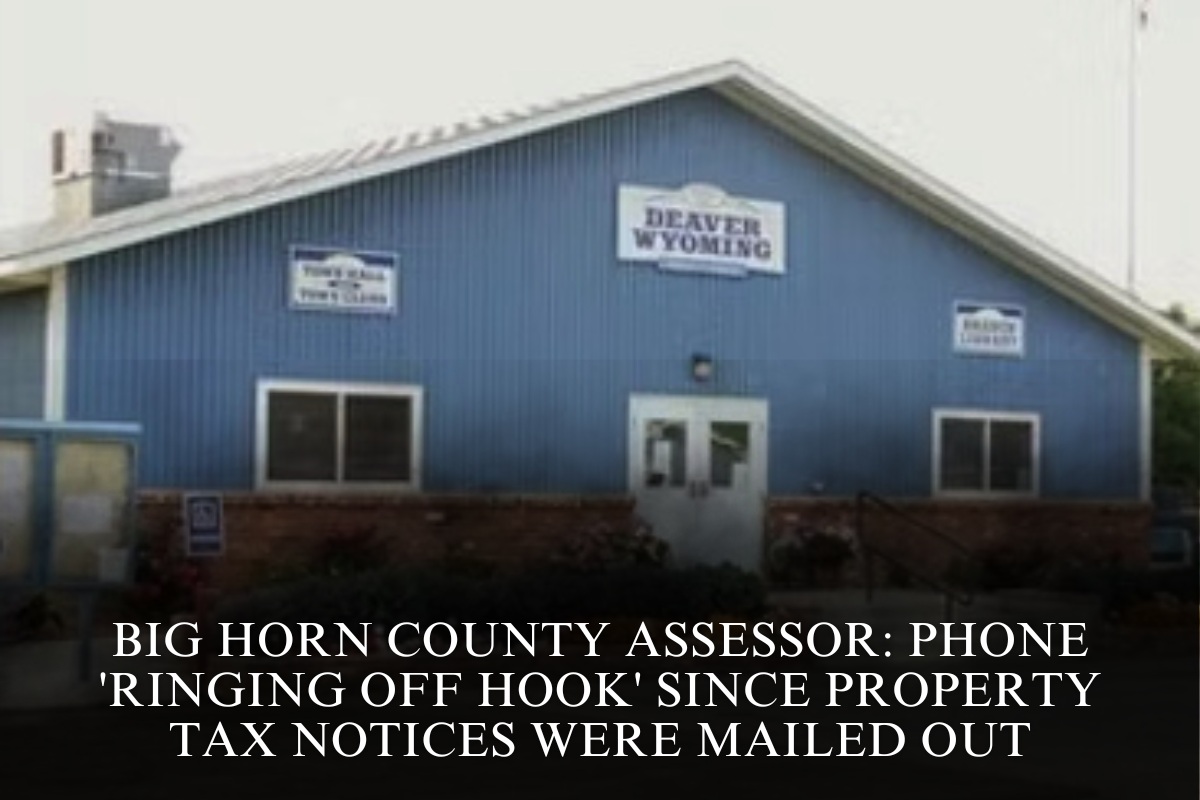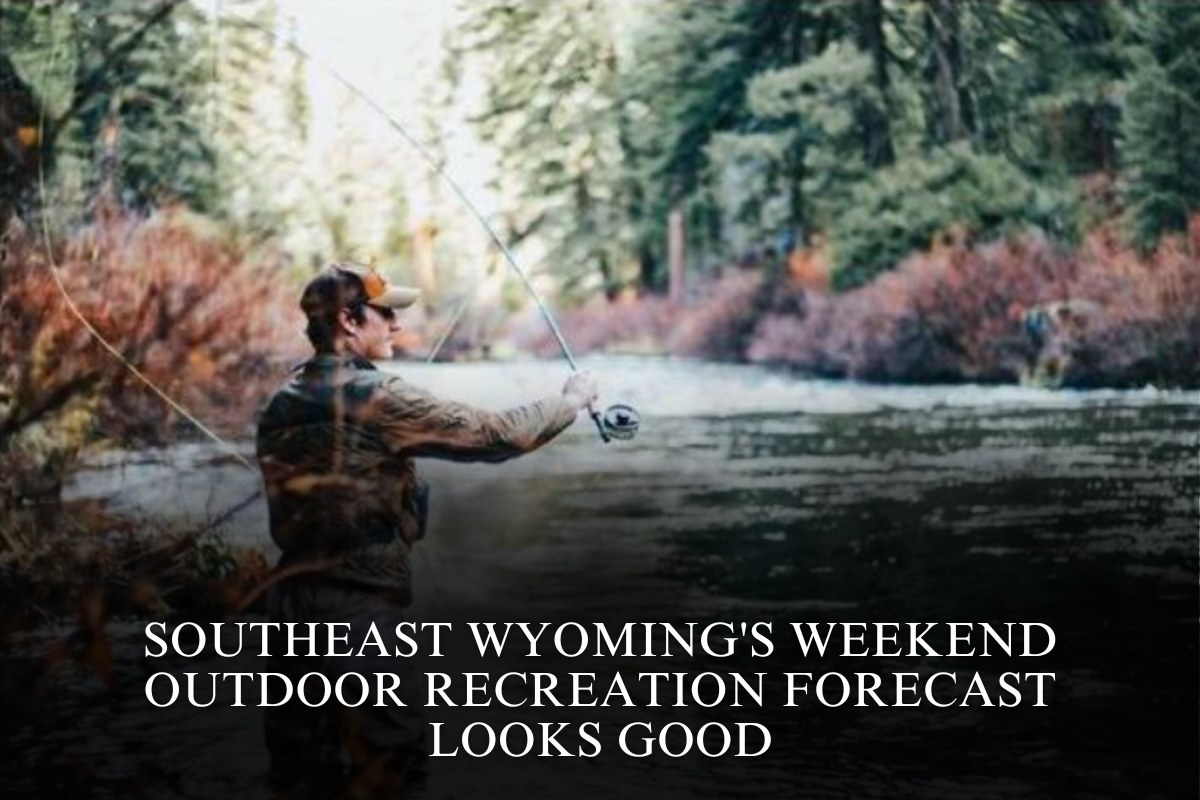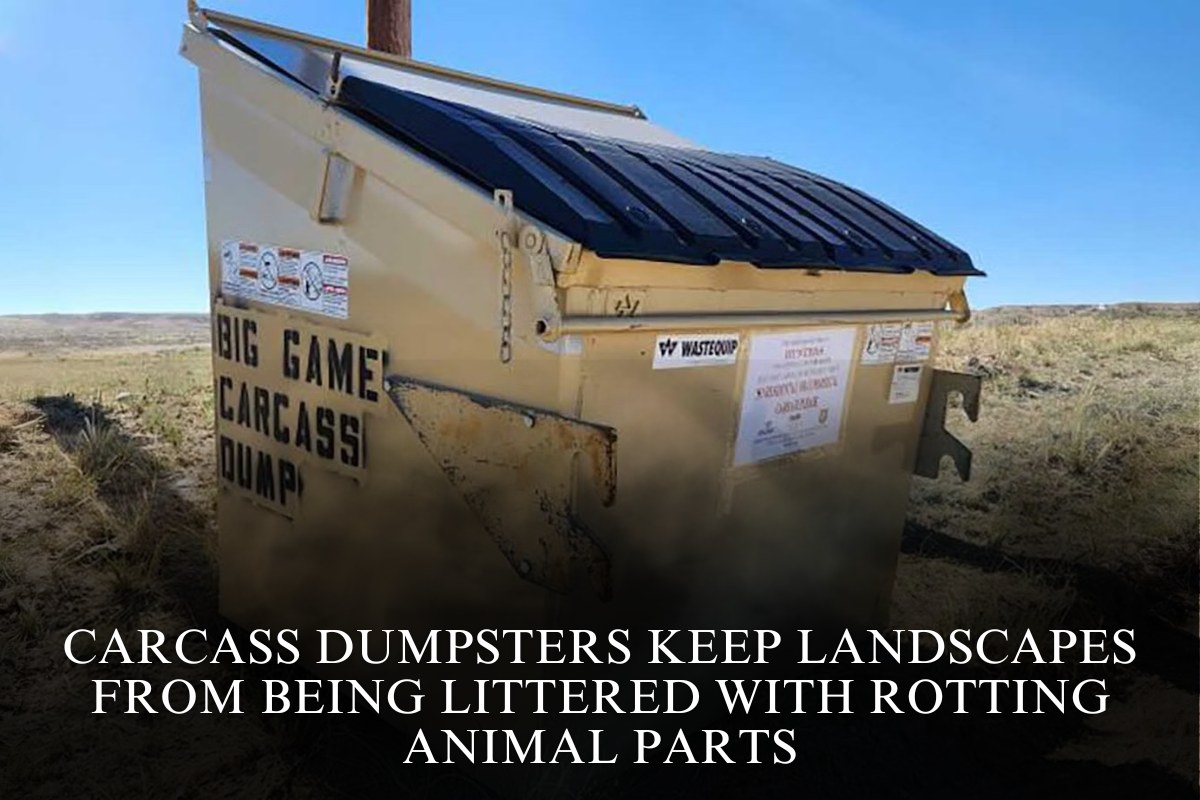If cheatgrass and other annual invasive grasses are allowed to spread unchecked, mule deer in northeast Wyoming will lose valuable habitat, according to a new University of Wyoming study.
The study, published this week in the journal Rangeland Ecology & Management, discovered that mule deer avoid areas where invasive annual grasses like cheatgrass are taking over sagebrush and grassland habitats.
The study predicts that if these weeds spread unchecked, mule deer in northeast Wyoming could lose over half of their high-quality habitat in the next two decades.
Fortunately, research indicates that targeted management of invasive annual grasses can reverse this trend. “This is one of the first research studies to clearly assess the impacts of invasive annual grasses on mule deer habitat selection,” says Kurt Smith, the study’s lead author and senior research scientist at the University of Washington.
“If we do nothing, the situation will deteriorate. However, if we treat cheatgrass and other invasives strategically, we have a good chance of preserving big game populations.”
Mule deer eat healthy sagebrush and other native perennials. Cheatgrass and other invasive grasses are less nutritious and provide poor habitat for big game, particularly in the summer and fall, according to the researchers.
Smith and his colleagues used GPS collars to track the movement of over 100 mule deer across the landscape, including areas with invasive grasses. They then used the Rangeland Analysis Platform to overlay the animal movements with the type of vegetation cover.
Mule deer prefer habitats with low levels of invasive annual grasses, the researchers discovered.
However, once invasive annual grasses had covered more than 13% of sagebrush lands, mule deer began to use them less. When invasive grasses covered more than 20% of the land, mule deer avoided those areas.
After compiling deer movement and vegetation data, the researchers predicted what the future might look like under two scenarios: one in which invasive grasses continued to spread across the sagebrush biome at current rates, and another in which active management actions (such as herbicide application) reduced the weeds and allowed native perennials to thrive.
If nothing is done to protect core sagebrush areas from weed spread, invasive annual grasses have the potential to reduce high-quality mule deer habitat in northeast Wyoming by 62% over the next 20 years, according to the findings.
“Mule deer are already experiencing habitat loss and fragmentation throughout the West. “Doing nothing is not an option,” says Jerod Merkle, Knobloch Professor of Migration Ecology and Conservation at the University of Washington and the study’s senior author. “Luckily, we now have the tools, the science and the broad support to combat the spread of invasive annual grasses in Wyoming and beyond.”
According to the new study, if targeted treatments are applied in areas already prioritized by existing conservation frameworks such as the Sagebrush Conservation Design, habitat loss can be completely reversed.
These frameworks prioritize treating areas with low to moderate levels of invasive grasses, as well as locations near intact, core sagebrush landscapes.
“The predicted maintenance of high-quality mule deer habitat is stunning if we proactively defend core sagebrush from invasive annual grasses,” says Brian Mealor, director of the University of Wyoming’s Institute for Managing Invasive Grasses Invading Natural Ecosystems (IMAGINE) and study co-author. “It gives a lot of hope that we can protect wildlife while also improving rangelands as a whole.”
Partners from across the West are working together to develop novel, win-win solutions for landowners and managers who want to protect sagebrush rangelands and the wildlife that lives there.
For example, IMAGINE and the USDA Natural Resources Conservation Service’s Working Lands for Wildlife offer tools, funding, and technical assistance to manage invasive annual grasses. The Wyoming Migration Initiative at the University of Wyoming, in collaboration with the United States Geological Survey, state wildlife management agencies, and Tribes, provides migration maps and other science-based strategies for prioritizing weed treatment to benefit the West’s iconic big game species.
“Sagebrush rangelands support rural economies through ranching, hunting, and recreation,” explains Jeremy Maestas, an ecologist with the USDA Natural Resources Conservation Service (NRCS).
“This research clearly shows that now is the time to defend and restore the sagebrush biome, not just for mule deer but for all the people and wildlife who live here.”
The Wyoming Game and Fish Department, USDA NRCS Working Lands for Wildlife, Western EcoSystems Technology, Inc., the Knobloch Family Foundation, and the University of Wyoming all provided funding for the study.












